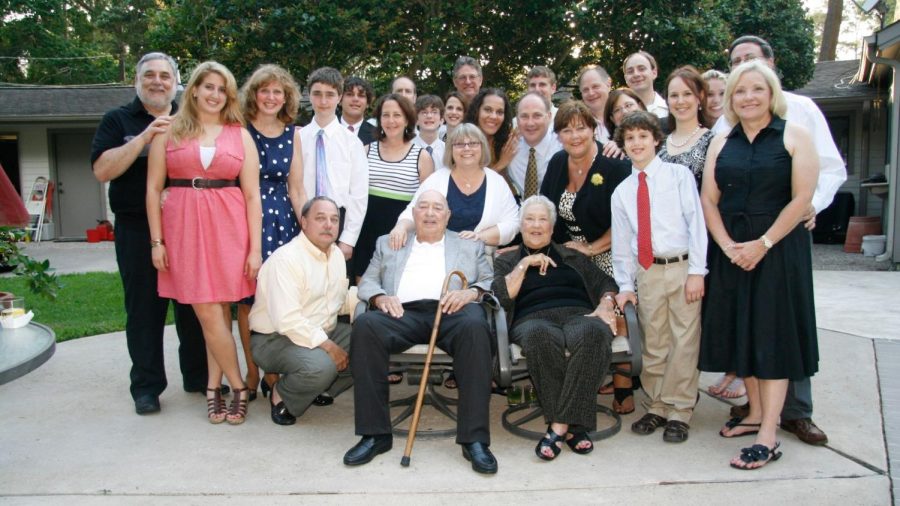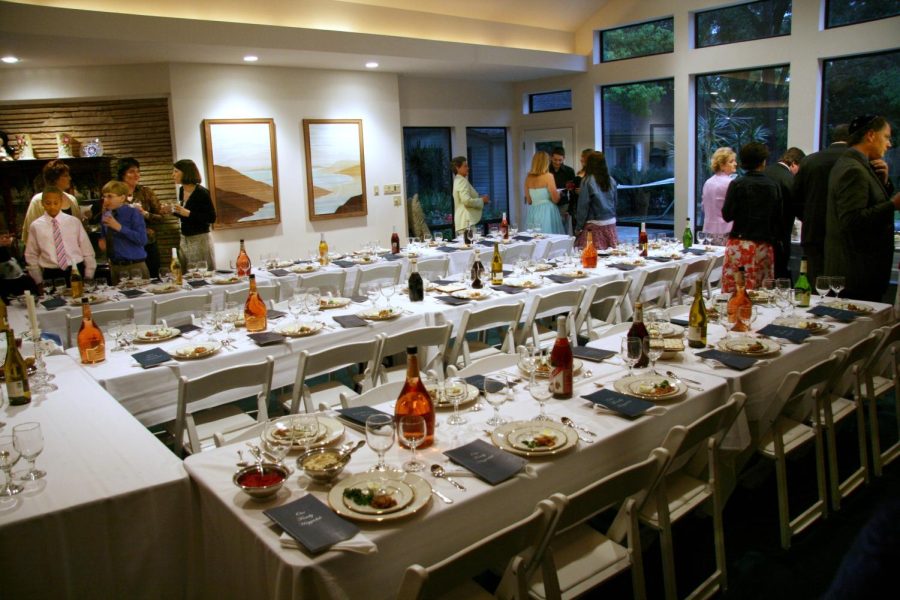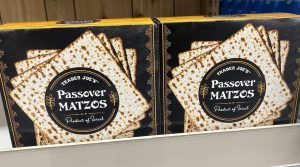Families expand seder traditions with non-Jewish guests invited to Passover
The Wise-Shuchart family’s Passover seders have included non-Jewish guests for three decades. Photo courtesy of Andy Wise
Published March 27, 2023
Nearly 30 years ago, a popular local Passover event began. The Wise family seder has grown from a gathering of 15 to a high of 50. These seders also have been noteworthy for the faith of its guests. Usually, about half are non-Jewish.
“What the non-Jewish friends got out of it was the closeness of the event that brings people together,” said Andy Wise, a member of Congregation Shaare Emeth. “Most of them were at least somewhat familiar with the Exodus story. Telling it during a seder pulls people together and drives the message home.”
The Wise family seder eventually became known as the Wise-Shuchart seder. Extended family members in Philadelphia, Houston and Dallas now often host their own versions, Shirley Wise said.
“We would always invite friends and neighbors who weren’t Jewish, and some of our family members said, ‘We’d really like to host a seder where we can invite our non-Jewish friends, too,’ ” she said.
The Wise-Shuchart Passover tradition continues three decades later (albeit with a couple of COVID-year virtual seders) and often have repeat non-Jewish guests, Shirley Wise said.
“Some had never tried gefilte fish or charoset before their first seder,” she said.
Bob and Lynn Barth also have hosted a seder and invited non-Jewish friends.
“A couple we used to be very close with were Roman Catholics and had never been to a seder before,” said Barth, 70, a member of Congregation Shaare Emeth. “We went through the Haggadah, and they were really into it in terms of the meaning of the story and the significance of the holiday and how people make it relevant to today’s world.
“The funniest part of it was the food. They had never had charoset, they’d never had gefilte fish, I don’t think they’d ever had a matzah ball in their lives. I don’t think they’d ever had kugel. They were good sports and tried a little bit of everything. They really enjoyed the evening. It was a nice experience for them.”
Jerri Livingston has hosted seders and invited non-Jewish guests for years. She began the practice to foster a better understanding of Judaism among non-Jews.
“I am active in the interfaith community,” said Livingston, who also attends Congregation Shaare Emeth. “Pre-COVID, our second night seder was probably more interfaith than Jewish. The interfaith participation enriched our discussions. I think the Jews and the non-Jews learned from each other. They gained an appreciation for the idea that the more we think we’re different, the more we’re really all the same. We each have our own journey. Sometimes they’re similar, sometimes they overlap and sometimes they’re totally different.”
One regular non-Jewish guest at the Livingstons’ is Michael Lane, who is Lutheran. Lane attended his first seder when he was teaching Sunday school in his native Minnesota.
“I attended two seders there and since I moved to St. Louis, where the Jewish population is much larger, I’ve been exposed to it much more and met the Livingstons,” Lane said. “They’ve invited me to four seder meals now, and it’s a wonderful thing. I can’t think of anything in the Christian community that is as sacred as the seder. We have Christmas dinner and Easter dinner, but the symbolism in the seder meal is a lifeline back to those days when it meant so much.”
The seder plate is filled with symbolism, from maror representing the bitterness of slavery, to salt water standing in for tears shed. Other activities such as hiding the afikomen and a glass of wine for Elijah the Prophet add to the mystique for a first-timer. Add in four glasses of wine and a good meal and you have recipe for a congenial get-together.
Fellowship and food are a big draw for Rich Kendrick, a non-Jewish St. Louisan and veteran of 20 seders.
“People I’ve met at seders tend to be very friendly … and you get a good meal,” said Kendrick, an Episcopalian.
In addition to being a regular Passover seder guest, Kendrick often attends a Torah learning class, and he observes the Jewish sabbath.
Non-Jewish guests have become a tradition for Becky Nelson Zoole, project coordinator at Central Reform Congregation.
“We have guests at almost every seder and frequently they’re not Jewish, said Zoole, 62. “It has definitely become a family tradition for us. A few times when the group has been so large that the children’s table is in another room, we’ve had one of the non-Jewish guests who has never attended a seder ask the four questions. We try to have the kids do it, too.
“Sometimes our non-Jewish guests weren’t aware that Jewish people celebrated Passover this way. They were familiar with Passover from their Bible, but to actually sit around the table and re-create a Roman era banquet, leaning on your side and dipping your food, it’s really a powerful experience for some people. The foods are often new to them, too. Of course, raw horseradish can be an eye opener, and a sinus opener.”




















